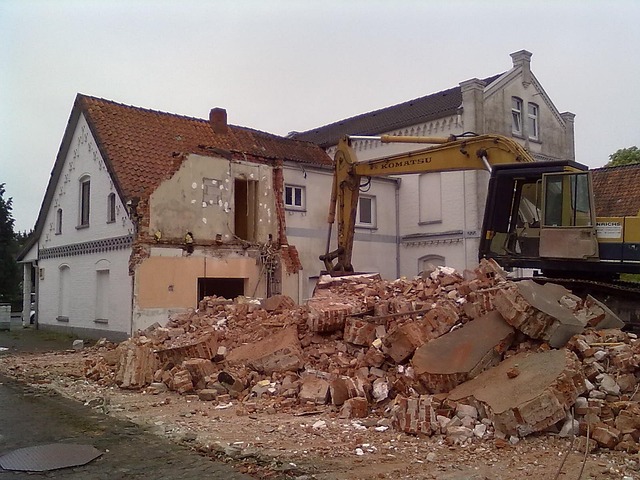Managing Noise and Dust: Environmental Considerations in Demolition
April 21, 2025

Dust and noise pollution are the typical by-products of building demolition. Especially, if you do not have expert contractors handling the demolition process, noise and dust pollution will be your constant companion throughout the demolition process. Whatever the reason may be, you cannot just allow the demolition process to be noisy and cause dust pollution. A proper method must be followed during demolition to ensure it does not impact neighbouring properties. In this blog, you will learn about the impact of noise and dust pollution on neighbours and the overall environment. We will discuss how you can manage these two disruptive by-products of demolition work with ease.
Why Noise and Dust Matter in Demolition
Continuous noise not only disturbs your environment but also reduces your productivity by breaking your concentration. You cannot focus on creative work or fully engage in your tasks. Therefore, you must manage the noise when demolishing an old building. Similarly, dust particles in the air can be highly damaging to patients with lung disease. If you have any patient with asthma or COPD in your neighbourhood, then the dust particles and noise pollution from the demolition site will make their medical condition worse. To ensure that your neighbour doesn't complain about you, address the noise and dust pollution issues when you have the time.
Key Sources of Noise and Dust During Demolition
Dust and noise pollution can impact the neighbours if a large commercial building is set to be demolished. When demolishing a large commercial building, you must employ large excavators or use controlled explosives. Large machinery will cause noise and also produce dust particles. Similarly, a controlled explosive demolition will create a cloud of smoke and high-scale noise. The large volume of the smoke field with dust concrete particles can carry itself away from the site, while the high-scale noise from explosives can shatter glass installed in windows and doors. Even when demolishing an old residential building, noise and dust pollution are common. Noise from jackhammers or manual tools can be disruptive to neighbours. At the same time, the demolition of the concrete structure and the handling of waste materials can contribute to dust pollution. So, how do you manage the noise and dust pollution from a demolition site? Let's find out.
Noise Management Strategies
Proper planning can help reduce noise pollution. Let's look at these strategies in detail.
a. Pre-Demolition Planning
Select a particular time during the day when you went to the demolition work. You must ensure that during this time, neighbours will be out for work, at the office, or studying. During the planning phase, you can identify areas in the building that will require more work to be demolished. Naturally, it will cause more noise production. If you plan properly before the demolition work, you can take precautionary measures to reduce noise pollution.
b. Use of Low-Noise Equipment
Proper use of demolition tools that produce low-level noise is also a good option to minimise noise disruption. Modern demolition equipment also features technology that minimises noise levels. You should also ensure that the demolition contractor maintains the equipment for better functionality. If the equipment works as it is supposed to, the demolition work will not generate a high level of noise.
c. Physical Barriers
Above all, you can create physical barriers with plywood covering or other materials to surround the demolition site. It will restrict the disruptive sound from travelling further.
d. Communication with the Community
As we discussed at the beginning, choose a specific time to complete your demolition work, but please communicate with your neighbours first. After speaking with them, you will know their daily schedule and the times when they are not home. This will give you a window of opportunity to complete the demolition work.
Dust Control Measures
Similar to the noise control measures, you can control the spread of dust particles with proper planning and equipment.
a. Dust Suppression Systems
Large-scale water sprays are efficient in minimising the spread of dust particles. The spread water binds with airborne dust particles and falls to the ground. The type of water spray you use depends on the area and scale of the demolition site.
Sustainable Demolition Practices
To renovate an old building or prepare a clean site for new construction, demolition is necessary. However, you can adopt sustainable approaches in demolition work. Recycle construction waste materials which can be used in construction again. The more construction materials you recycle, the lower will be their environmental impact.
Conclusion
To effectively manage noise and dust pollution during demolition work, it is essential to plan appropriately and utilise modern equipment. With prior planning, you can identify a suitable time to complete the demolition work and use water spray to reduce dust pollution, thereby safeguarding any patients in the neighbourhood. Demolition Contractor London has been doing this work for years. If you wish to demolish a commercial or residential building, please get in touch with us promptly.
Recent Blogs
- On-site Concrete Crushing: A Sustainable Way to Manage Concrete Waste
- What Is Hydrodemolition and Why Is It Gaining Popularity in the UK?
- Why You Need an Asbestos Survey Before Demolishing a Building in the UK
- Managing Noise and Dust: Environmental Considerations in Demolition
- Top 7 Signs to Know It's Time to Demolish Your Old Building